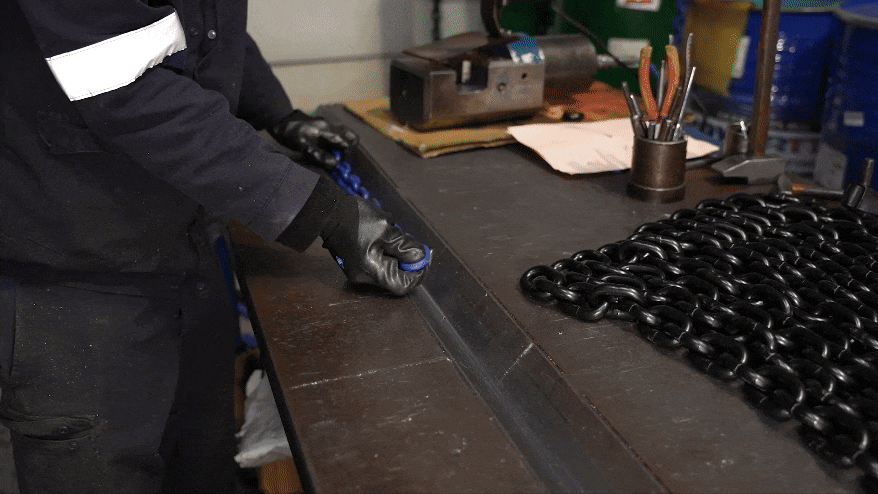I - Commissioning
Before putting into service for the first time, the user must check the following points :
- That the sling matches the order,
- Availability of the corresponding declaration of conformity and operating instructions,
- Presence of the marking by checking the adequacy of its contents with the sling,
- General condition of the sling (transport damage),
- Recording the material in the lifting equipment records.
II - Use
It is necessary for the user ( qualified person) to check the sling before and after each use to identify any signs of wear, shock or damage. Do not hesitate to isolate the sling if in doubt.
Before starting the lifting operation, the user must pay attention to :
- An absence of employees on and under the load,
- Sufficient freedom of movement in the working area,
- When the strands are not used, attach the hooks to the top link,
- Protect the chain against sharp edges,
- Check that the top link articulates freely on the coupling point of the hoist,
- Do not load the hooks on their tips,
- Gradually put under tension the sling,
- Never lift with a twisted chain,
- Shorten a chain sling using a shortening hook or parallel hook.
Do not knot the chain, the load point must always lay correctly in the bottom of the hook.
NEVER EXCEED THE WLL INDICATED ON THE IDENTIFICATION PLATE ACCORDING TO THE SLINGING ANGLE, NEVER LEAVE THE SUSPENDED LOAD WITHOUT SUPERVISION.
III - Inspection and maintenance
These inspections must be carried out by a qualified person.
- Clean the sling with a suitable, non-corrosive and non-covering product.
- Store the slings carefully (e.g. rack) and grease them lightly if not used for a long time.
- Check the pitch and wear of the links, and the length of each leg.
- Check the components of the sling (wear, deformation, presence of the latches), oil them and reassemble them with new original axles and pins.
- Reject the sling if it has lost its identification plate, has begun to break, is excessively corroded, is stretched or deformed in comparison with the original dimensions, or if any of the components are damaged.
We do not recommend any repairs by any method.
CHAIN SLINGS MUST NEVER BE SUBJECT TO HEAT OR SURFACE TREATMENT OR WELDING OPERATIONS.
Note : In accordance with article R233-11-2, it is necessary to carry out a static test and a suitability test after each repair by an accredited and qualified person.
Une large gamme d'élingues chaîne
Traction Levage distribue une large gamme d'élingues chaîne de 1 à 4 brins en grade 80 à 100. Ces élingues peuvent être équipées d'accessoires pour faciliter vos opérations de levage.
Cliquez sur le bouton ci-dessous pour découvrir les élingues chaîne disponibles.




